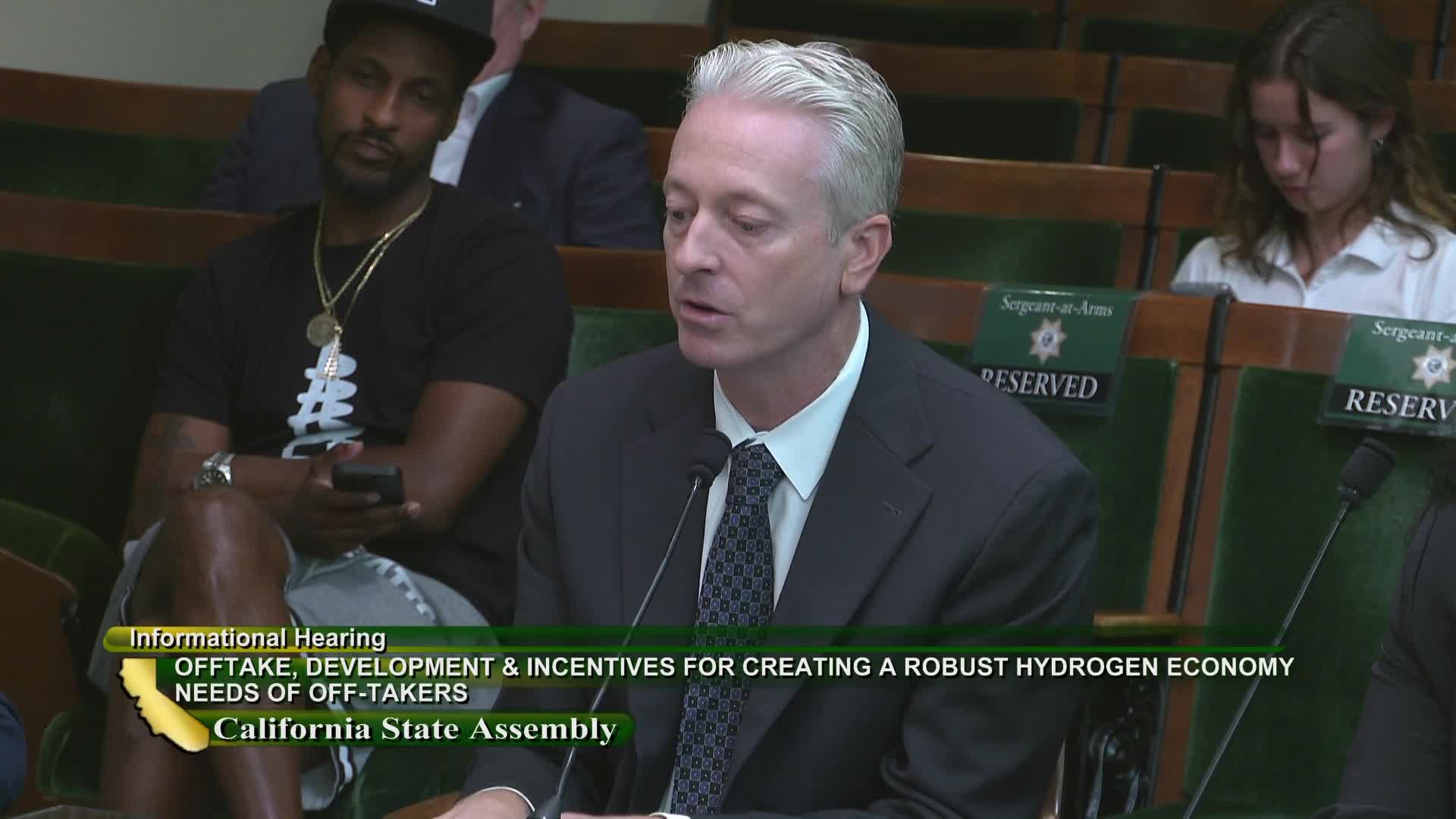California pushes for hydrogen revolution to meet 2032 goals
August 06, 2024 | California State Assembly, House, Legislative, California

This article was created by AI summarizing key points discussed. AI makes mistakes, so for full details and context, please refer to the video of the full meeting. Please report any errors so we can fix them. Report an error »

In a recent government meeting focused on the future of hydrogen production and its role in California's energy landscape, key stakeholders discussed the critical need for a cohesive strategy that encompasses production, transportation, distribution, and offtake of hydrogen. The assembly members emphasized the importance of establishing trust among stakeholders to ensure a successful transition to a hydrogen economy, highlighting that confidence in the process is essential for long-term success.
Assembly member Petri Norris pointed out the ambitious goal of achieving hydrogen production at a cost of $3 per kilogram by 2032, urging the need for interim milestones and critical enablers to reach this target. The discussion revealed that California currently produces about 80,000 metric tons of hydrogen annually, with a goal of ramping up to 190,000 metric tons by 2032 and ultimately 17 million metric tons by 2045. This ambitious plan is contingent on the rapid deployment of infrastructure and the establishment of a supportive ecosystem for hydrogen production.
The meeting also highlighted the importance of utilizing biomass and agricultural residues for green hydrogen production, with a focus on developing green ammonia facilities that could benefit local communities and farmers. Stakeholders acknowledged the necessity of supportive policies and infrastructure investments to ensure a sustainable supply of biomass.
As the meeting progressed, the assembly members discussed the identification of 37 key projects aimed at accelerating hydrogen production, with a call for legislative support to streamline processes and foster collaboration among various stakeholders. The overarching sentiment was one of urgency and optimism, as participants recognized the potential economic and environmental benefits of a robust hydrogen economy in California.
Assembly member Petri Norris pointed out the ambitious goal of achieving hydrogen production at a cost of $3 per kilogram by 2032, urging the need for interim milestones and critical enablers to reach this target. The discussion revealed that California currently produces about 80,000 metric tons of hydrogen annually, with a goal of ramping up to 190,000 metric tons by 2032 and ultimately 17 million metric tons by 2045. This ambitious plan is contingent on the rapid deployment of infrastructure and the establishment of a supportive ecosystem for hydrogen production.
The meeting also highlighted the importance of utilizing biomass and agricultural residues for green hydrogen production, with a focus on developing green ammonia facilities that could benefit local communities and farmers. Stakeholders acknowledged the necessity of supportive policies and infrastructure investments to ensure a sustainable supply of biomass.
As the meeting progressed, the assembly members discussed the identification of 37 key projects aimed at accelerating hydrogen production, with a call for legislative support to streamline processes and foster collaboration among various stakeholders. The overarching sentiment was one of urgency and optimism, as participants recognized the potential economic and environmental benefits of a robust hydrogen economy in California.
View full meeting
This article is based on a recent meeting—watch the full video and explore the complete transcript for deeper insights into the discussion.
View full meeting
